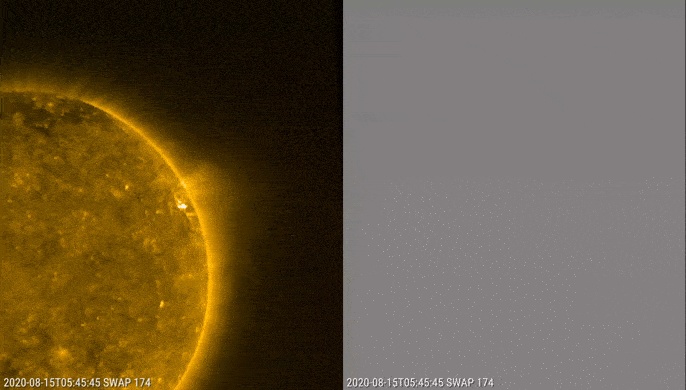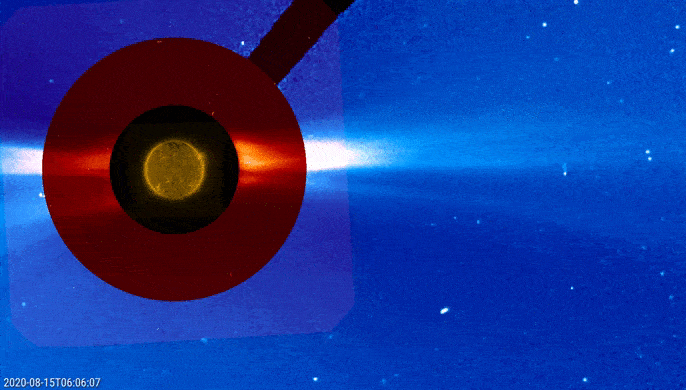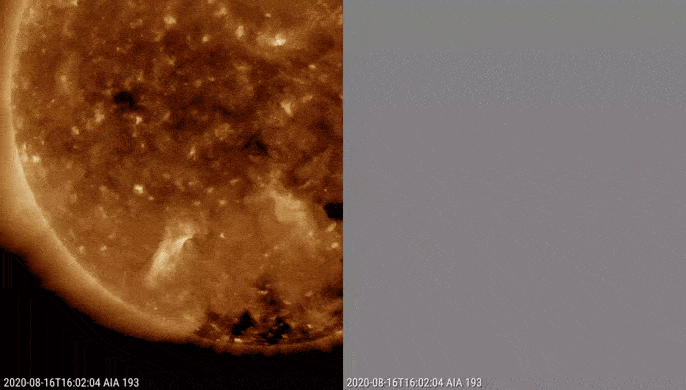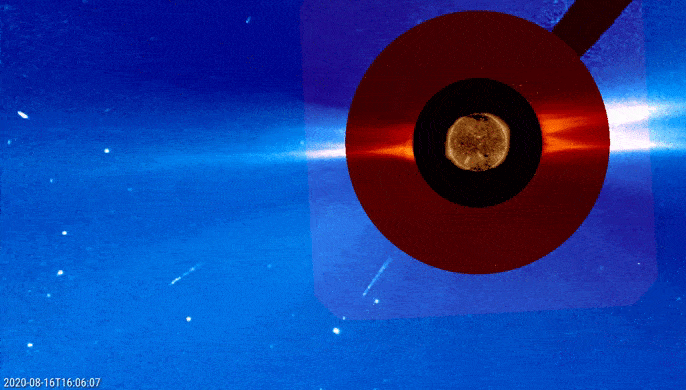Active region NOAA 2770 turned into a spotless plage on 14 August, while it was already close to the northwest solar limb. The region was responsible for a C1 flare on 8 August (see last week's newsitem), but had been relatively quiet since as it was decaying. Then, early on 15 August, the region produced a C2 flare peaking at 06:47UT (GOES-16). The eruption was associated with a coronal mass ejection (CME) directed to the west and away from the Earth. The SDO spacecraft was eclipsed by the Earth's shadow, but fortunately the PROBA2 spacecraft was not. The clips underneath show the eruption in extreme ultraviolet (EUV) on the left, and on the right are difference images (one image subtracted from the previous) to highlight faint changes. The subsequent movie consists of two coronagraphic images made by the SOHO spacecraft and overlaid onto the PROBA2/SWAP image. It shows the fairly narrow CME heading to the west.


Then on 16 August, a B1 event (17:26UT) took place in a spotless region in the southeast solar quadrant. The region rotated onto the solar disk as a spotless faculae field, and -remaining spotless- did not receive a NOAA number. Though a B-class event is weaker than a C-class event, the EUV images showed some coronal dimming (alias "transient coronal hole") to the northwest (upper right) of the blast site, as well as a series of post-flare coronal loops which may have contributed to the somewhat atypical x-ray and EUV curves. Also a coronal wave (also known as EIT wave) can be seen emanating from "ground zero" as a somewhat whitish hue, which is better visible in the difference images. Both the coronal dimming, the post-flare coronal loops, and the coronal wave are strong indicators that the event was associated with a CME. And that was indeed the case, as confirmed by coronagraphic imagery from SOHO. This CME was significantly wider than the 15 August CME, and though the bulk of the CME is not directed to Earth, a weak earth-directed component cannot be excluded.







